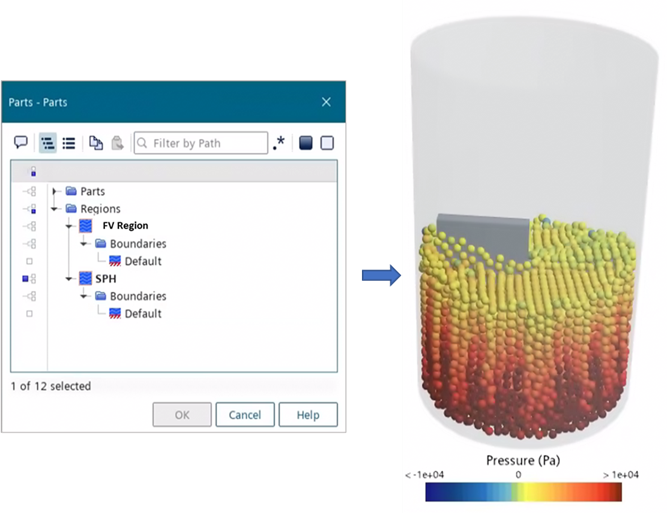SPH Post-Processing Reference
Simcenter STAR-CCM+ allows you to analyze the flow of SPH particles in the surface region or on boundaries.
Direct Data on Boundaries
By default, the surface mesh settings are inherited from the surface tessellation at import. In some cases, this surface discretization affects the rendering of the boundary solution data. Therefore, it can be necessary to remesh (refine) the imported surface to ensure accurate visualization of solution data on boundaries.
The following field functions are available on boundaries when the necessary physics or phase models are active:
- Volume Fraction of [phase]
- Computes the volume fraction of particles on a surface/boundary. You are advised to use the time-averaged volume fraction of liquid to analyze where the liquid is in contact with the surface.
- Velocity Magnitude
- Computes the velocity magnitude on a surface/boundary.
- Velocity
- Computes the velocity vectors on a surface/boundary.
For no slip walls, the velocity field is the boundary condition (the wall velocity). For slip walls, the velocity is the normal component of the velocity (the normal component of the wall velocity). The tangential component of the velocity field at the boundary, in the laboratory frame of reference, is interpolated according to Eqn. (1110). When there are no SPH particles near the boundary, only the velocity of the boundary is displayed. For inlets, the velocity field is the boundary condition in the laboratory frame of reference.
Direct Data on SPH Particles
You can visualize simulation results such as velocity magnitude or pressure directly on the SPH particles by adding the surface region to surface, scalar, and vector displayers in a visualization scene.
The following screenshot shows the pressure distribution of a liquid:

The Parts property consists of the SPH surface region. The Scalar Field is set to Pressure.
Simulation History Phase Data
You can use simulation history files to save transient scalar and vector data for SPH simulations.
- Volume Fraction of [phase]
- Velocity
- Sph Particle Size
- Sph Particle Volume
- Normal
| 注 | When exporting SimH files, selecting a region automatically records both boundaries and particle data. However, choosing only all boundaries in the Inputs settings does not automatically include SPH particle data. |